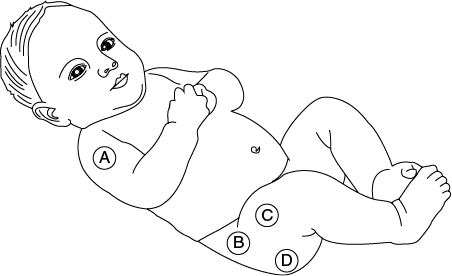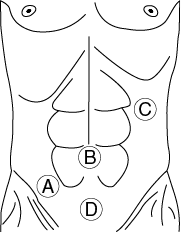-
The LPN/LVN is reinforcing teaching for a client after a right mastectomy and axillary lymph node dissection. Which statement by the client requires further intervention by the LPN/LVN? Select all that apply.
- “I will wear gloves and long sleeves whenever I go out and work in my garden.”
- “The risk for arm swelling will decrease one year after my treatment is completed.”
- “I will sleep with my right arm elevated on a small flat pillow from now on.”
- “If my right arm begins to feel heavy, I should contact my primary health care provider.”
- “It will be necessary for me to wear a compression bandage for the rest of my life.”
-
The LPN/LVN is preparing to reinforce instructions for a client about the use of an incentive spirometer. Arrange the following steps in the order the client should perform them. All options must be used.
- Seal lips around the mouthpiece.
- Assume high Fowler’s position.
- Exhale slowly and cough.
- Hold breath for 3 to 5 seconds.
- Inhale slowly and deeply.
-
The LPN/LVN is preparing to infuse 1 L of normal saline solution at a rate of 125 mL/hr. The drop factor for the intravenous tubing is 15 drops per mL. What is the drip rate per minute? Round to the nearest whole number. ________ gtt/minute
-
The LPN/LVN is preparing to administer an intramuscular injection to a 6-month-old client. Identify the area where the injection should be given.
- A.
- B.
- C.
- D.
-
The LPN/LVN is caring for a client diagnosed with Parkinson’s disease. The LPN/LVN observes that the client has tremors of the hands and slurred speech. The family reports that the client appears depressed. What is the priority
of care for this client?
- Place a clock and calendar within the client’s view in room.
- Encourage the client to perform range-of-motion exercises.
- Ask the family about the client’s favorite television shows.
- Assist client to sit on the edge of the bed before ambulation.
-
The client is waiting to be picked up by family members after a cystogram. The LPN/LVN is reinforcing teaching about the client's home care for the first 48 hours. Which of the following instructions is appropriate for the LPN/LVN to include? Select all that apply.
- Decrease water and other fluid intake.
- Avoid consuming alcoholic beverages.
- Seek medical attention for a slight burning sensation when voiding.
- Seek medical attention for the appearance of blood in the urine.
- Apply heat to the lower abdomen to relieve pain and muscle spasm.
- Report fever, chills, or increased pulse to the primary health care provider.
-
The LPN/LVN is caring for the client who has just undergone surgery for an inflamed appendix. The surgeon made a traditional incision directly over the organ removed. Identify the area where the LPN/LVN would check for bleeding and infection.
- A.
- B.
- C.
- D.
-
The LPN/LVN is preparing to give an immobile client a bedpan. Arrange the following steps in the order that the LPN/LVN should perform them. All options must be used.
- Cover the client with bed linens for privacy.
- Help lift the client by placing one hand under the client’s lower back.
- Ask the client to flex the knees and raise the buttocks.
- Put on a clean pair of examination gloves.
- Raise the opposite side rail to prevent the client from falling out of bed.
- Place the bedpan on the bed so that the client’s buttocks rest on the rim.
-
The LPN/LVN is explaining how to estimate sodium intake to a client prescribed the DASH diet. The DASH diet limits daily sodium intake to 1,500 mg, which must account for sodium in food and added to food. A quarter-teaspoon of salt contains 500 mg of sodium. What is the maximum total amount of salt that the client could ingest
per day, in teaspoons? ________ teaspoons
-
The LPN/LVN is caring for a client diagnosed with possible liver damage following a motor vehicle accident. Which of the following actions by the LPN/LVN reflects appropriate care for this client? Select all that apply.
- Prepare for client’s inability to self-bathe.
- Make sure the side rails are up at all times.
- Report the client’s nosebleed to the unit charge nurse immediately.
- Report the client’s constipation to the nurse manager immediately.
- Remove the hospital bed pillow to help the client lie flat.
- Inspect the client’s skin and eye color for signs of jaundice.

